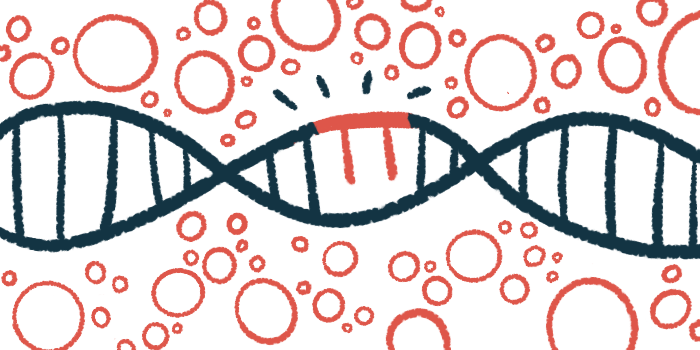Exon 44-skipping therapy wins FDA’s breakthrough designation
NS-089/NCNP-02 increased dystrophin in muscle tissue in Phase 1 study

The U.S. Food and Drug Administration (FDA) has granted breakthrough therapy status to NS-089/NCNP-02, NS Pharma’s candidate for Duchenne muscular dystrophy (DMD) amenable to exon 44 skipping, the company announced.
The designation is intended to speed up the development and review of therapies for serious or life-threatening diseases. It’s for those that show early evidence on important clinical measures of being better than existing treatments.
The award comes after positive results from a Phase 1/2 study (NCT04129294) that tested NS-089/NCNP-02 on six boys with DMD in Japan. The next steps include two Phase 2 studies. One, cleared by the FDA, will be conducted in the U.S. by NS Pharma, while the other will be in Japan by Nippon Shinyaku, which owns NS Pharma.
DMD is a form of muscular dystrophy caused by mutations in the DMD gene, which provides instructions for making dystrophin, one of a group of proteins that help keep muscles strong and protected against the wear and tear of movement.
Like other genes, DMD is made up of protein-coding regions (exons) and noncoding regions (introns). Most mutations are deletions of one or more exons, which cause the gene’s instructions to fall out of alignment and result in a shorter protein that’s rapidly degraded.
Effect of exon-skipping therapy on DMD
Exon-skipping therapies work by skipping over, or leaving out, whole exons as a way to bypass mutations so the remaining exons can fit together. This lets the body make a shorter, but working version of dystrophin.
NS-089/NCNP-02 is a type of short molecule called antisense oligonucleotide designed so there’s a jump over exon 44 of the DMD gene.
The shorter, working version of dystrophin that’s produced is expected to slow the disease’s progression and benefit the 7%-11% of people with DMD amenable to exon 44-skipping therapy.
In the Phase 1 study, the six boys, who carried mutations amenable to exon 44 skipping, were given NS-089/NCNP-02 once a week as an injection into the vein for 24 weeks (about six months) to check the therapy’s safety and effectiveness.
The therapy increased the levels of dystrophin in muscle tissue, reaching 10.27% of normal in those given a lower dose (40 mg/kg) and 15.79% in those given a higher dose (80 mg/kg).
The boys’ motor function either remained stable or tended to improve, based on changes in the North Star Ambulatory Assessment (NSAA) scores over 24 weeks. NSAA is a measure of motor function in children with DMD who can walk.
There were no side effects leading to the treatment being discontinued and all six boys rolled over into an extension study (NCT05135663) where NS-089/NCNP-02 will continue to be given for 216 more weeks, or about four years.
The FDA granted rare pediatric disease status to NS-089/NCNP-02 for DMD in July.







